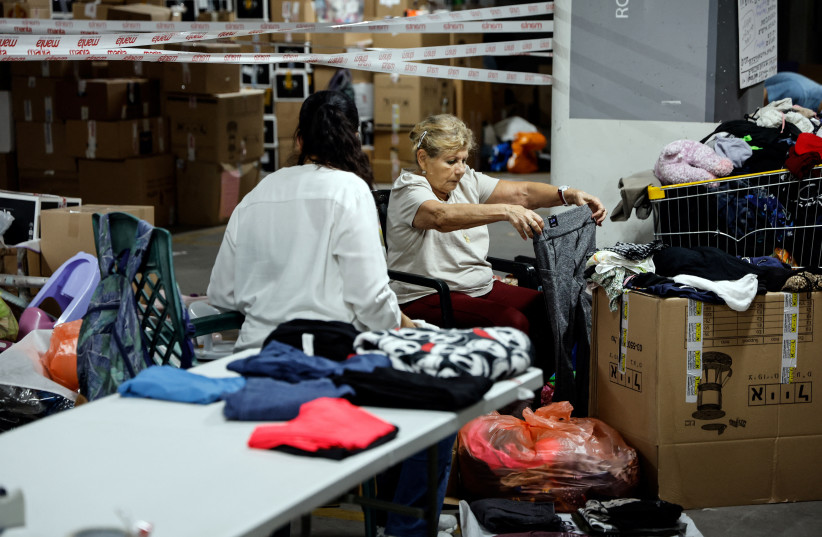On October 7, when the worst massacre in the history of the Jewish state broke out, people across the country sprang into action, providing a wide range of necessary services to the families in the South who lost their homes, had to evacuate, and are dealing with unspeakable trauma.
Since that day, thousands of volunteers across the country have been caring for everything from food preparation and transportation to babysitting, organizing equipment, psychological help, and everything in between. This includes hosting families, running activities for children, offering food services for families and military bases, and updates on daily blood donation needs.
The individuals who initiated these civilian chamalim (Hebrew for “war rooms”) represent a mix of various groups, including some of the movements that had, just two weeks ago, been protesting against the government’s proposed judicial reform. They are everyday citizens; they weren’t asked to do it, but they did it all the same, and without batting an eyelash.
In Jerusalem, the leader of the Student Protest, Nadav Zalzberger, told The Jerusalem Post’s Ariella Marsden that, “from the moment it all started, we started helping locally wherever we were needed. We decided we weren’t waiting for the authorities to get organized; we were just going to do what we can where we can.” The monetary support for the Jerusalem chamal cuts across sectors, he said.
This begs the question: what would the aid effort have looked like if these groups hadn’t decided, in a matter of hours, to completely redirect their missions? What infrastructure is there to handle a major, large-scale emergency in Israel?

The government has an agency for this. Where is it?
The answer lies in a body nestled under the Defense Ministry, the National Emergency Management Authority (NEMA), which is “tasked with coordinating and integrating all of the organizations responsible for home front defense during emergency scenarios,” particularly in the civil realm, according to its website.
We are currently, unquestionably, in such an emergency scenario.
But just last week, Globes ran a report tracing the diminished authority and power of NEMA. These gaps were highlighted profoundly during the coronavirus pandemic, the report notes, as most of both its authority and resources were transferred to the National Emergency Portal.
Senior INSS researcher Ofer Shelah told Globes that the government effectively emptied NEMA of its resources and authority; that when the pandemic rolled around, “NEMA was supposed to be a central body, but it didn’t have the manpower or the authority to do anything; that has not changed. NEMA is not equipped to handle the situation, which is challenging on several levels – health, living accommodations, and the Home Front Command. It is supposed to be ready to handle all of this, and it is not.”
The fact that ordinary people stepped up to the plate is remarkable and heartwarming, but it should never have fallen to them to do so.
The government was gone, but citizens made it happen
The Hamas massacre only took place on one front; imagine what would have happened – and what still might – if Hezbollah decided to significantly enter the fray. This one horrific test case points to major failings that could have devastating consequences in a larger event.
In Tel Aviv, the chamal is being run by the Brothers in Arms and hi-tech protest groups. Journalist Ben Caspit wrote that “if, before visiting, I had a shadow of a doubt that we were going to win this, I now know for sure that we will.”
He described thousands of volunteers with a vast array of equipment, helping coordinate the evacuation and hosting of families, handling clothing, money, feminine hygiene, education, psychological help, and more.
The reality is that the government was not the first to show up when push came to shove and people really needed it. And now the government’s efforts are being drowned out by the grassroots volunteer groups.
When it really mattered, it was everyday Israelis who showed up for their fellow citizens in need. That speaks volumes about the incredible Israeli spirit, but also about the major gaps that exist in Israel’s official emergency response.
The time will inevitably come for the government to study where it fell short in the aftermath of the October 7 massacre and draw the appropriate conclusions, ensuring the relevant bodies are funded, trained, and prepared for whatever lies ahead.
